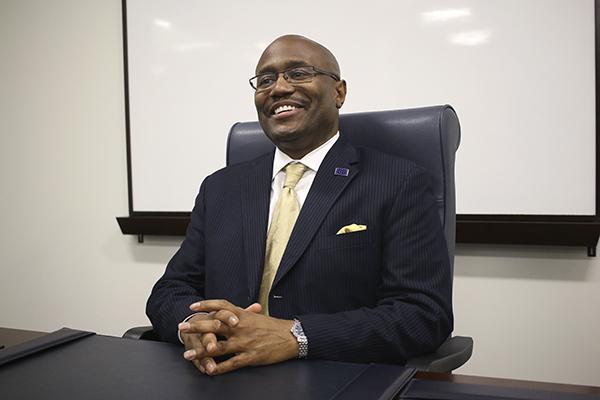As GW’s $1 billion campaign draws near the finish line, the University’s fundraising chief is staying focused on the present.
Vice President for Development and Alumni Relations Aristide Collins said this month that he hasn’t been talking with officials about what to do once the campaign hits its goal. Instead, he’s focused on being present on campus, bringing in donations for endowed faculty positions and encouraging students and young alumni to keep the campaign moving.
In August, University President Steven Knapp said he’d talk with trustees about options for the campaign: extending the goal, extending the deadline or wrapping it up when it hits the $1 billion mark.
“What I’m thinking about is, ‘How do we keep people engaged? How do we keep momentum going? How do we tell our story?’” Collins said.
Officials have raised about $809 million toward their $1 billion goal. The campaign launched publicly last June, and is coming off its most successful year of fundraising in history.
Though a major gift has not been announced since 2014, when billionaire philanthropists Sumner Redstone and Michael Milken contributed $80 million to rename the public health school, Collins said he is optimistic another major gift will come before the campaign ends.
Officials held the first-ever Flag Day event last year that encouraged current students and young alumni to write checks to GW. Collins said they were already planning the same event for next year.
Collins has also been traveling for the campaign, and said he’ll be increasing his travel as the campaign progresses. University officials have traveled to countries like Turkey to visit potential donors.
“You can’t be an active part of bringing people from the external community inside to support us if you’re not out talking,” Collins said. “So you see me walking around and going places and I want to do more of that, and I think that’s something important.”
Angela Joens, the assistant vice chancellor of development outreach for the University of California, Davis, said outreach and establishing personal connections with donors is key to bringing in gifts.
“Fundraising is about connecting a donor with an area, a field, a faculty member, a type of student that they are super passionate about,” Joens said. “They have the means to do something, and it’s about connecting passions.”
Collins’ two top-priority areas for donations are endowed professorships and “getting the enthusiasm out about where we’re going,” he said.
The University has announced two endowed professorships in the past month, which established faculty positions in the strategic management and public policy and Israeli studies departments. After a one-year sabbatical, Provost Steven Lerman will also take an endowed professorship in engineering.
University President Steven Knapp said after last week’s Board of Trustees meeting that endowed professorships are a good way to show donors how gifts can actually benefit students at GW.
“We had, last month, two chair dedications that were the result of gifts that the University had received,” he said. “We bring people to that, they see how inspiring it is to bring a great faculty member on board.”
Kimberly Kicenuik, the assistant vice president at the fundraising firm Community Counseling Service, said endowed professorships generally improve the quality of teaching. Those professors often have additional funding for research, which can lead to an improved classroom experience for students.
“Setting up these endowed chairs automatically offers opportunity in the excellence at an academic institution and it is part of an institution’s competitive edge,” Kicenuik said. “In order to keep creating those sustainable revenue streams, endowments are key pieces of that strategy.”
Ryan Lasker, Colleen Murphy and Jacqueline Thomsen contributed reporting.







